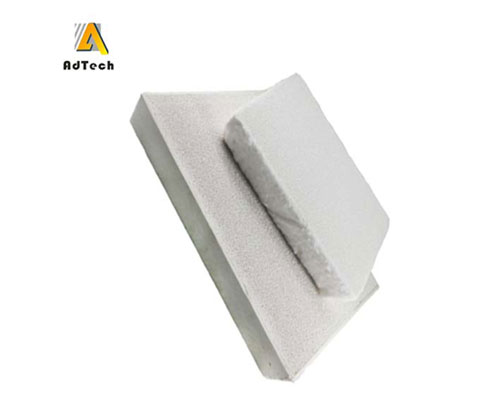Ceramic foam filter selection is important for a good filtering effect and no pollution to the alloy. A lot of practice shows that the use of ceramic foam filters can remove inclusions, improve the structure of the castings, increase the mechanical properties and pass rate of the castings, improve the processing performance of the castings and reduce the machining costs. However, if the application method is improper, not only the expected effect cannot be achieved, but it will bring trouble to the production and even increase the rejection rate of castings.
Ceramic Foam Filter Selection
The selection of ceramic foam filter material is based on the type of casting alloy and pouring temperature. Steel castings are generally made of zirconia. Cast irons are generally made of silicon carbide. Large cast steels and cast irons can be made of silica gel. Aluminum alloys are generally made of alumina, and magnesium alloys are generally made of magnesia.
The selection of the pore size of the ceramic foam filter is generally:
- 10 holes/inch (10 PPI) can be used for ductile iron large gray iron parts and steel castings.
- 20 holes/inch (20 PPI) for small gray iron castings, malleable iron castings, and non-ferrous metal castings.
- 30 holes/inch (30 PPI) for copper alloy castings and aluminum alloy castings.

The thickness selection of the alumina ceramic foam filter is based on the mechanism of the ceramic foam filter and purification. In order to make it fully play the role of purification and be able to withstand the impact of high-temperature metal flow, the filter must have a certain thickness to prevent the filter from burning through. Burning through the filter will cause artificial slag and cause the casting to be scrapped.
Recommendations:
- The thickness of light alloy castings such as small aluminum alloys is 12~15mm.
- The thickness of large non-ferrous alloy castings is 20-25mm.
- The iron castings are 10-22mm.
- The steel castings are ≥20mm.
The placement of the ceramic foam filter in the runner and the design and casting production of the pouring system containing the filter, the ceramic foam filter can be placed horizontally at the bottom of the sprue, horizontally or vertically in the runner and the inner runner; vertically divided type, the filter can be placed on the side of the sprue. In order to avoid the turbulent flow of molten metal, the gating system is generally designed as a semi-closed or open type, and due to the flow resistance of the filter, the size of the relevant unit of the gating system must be increased.

